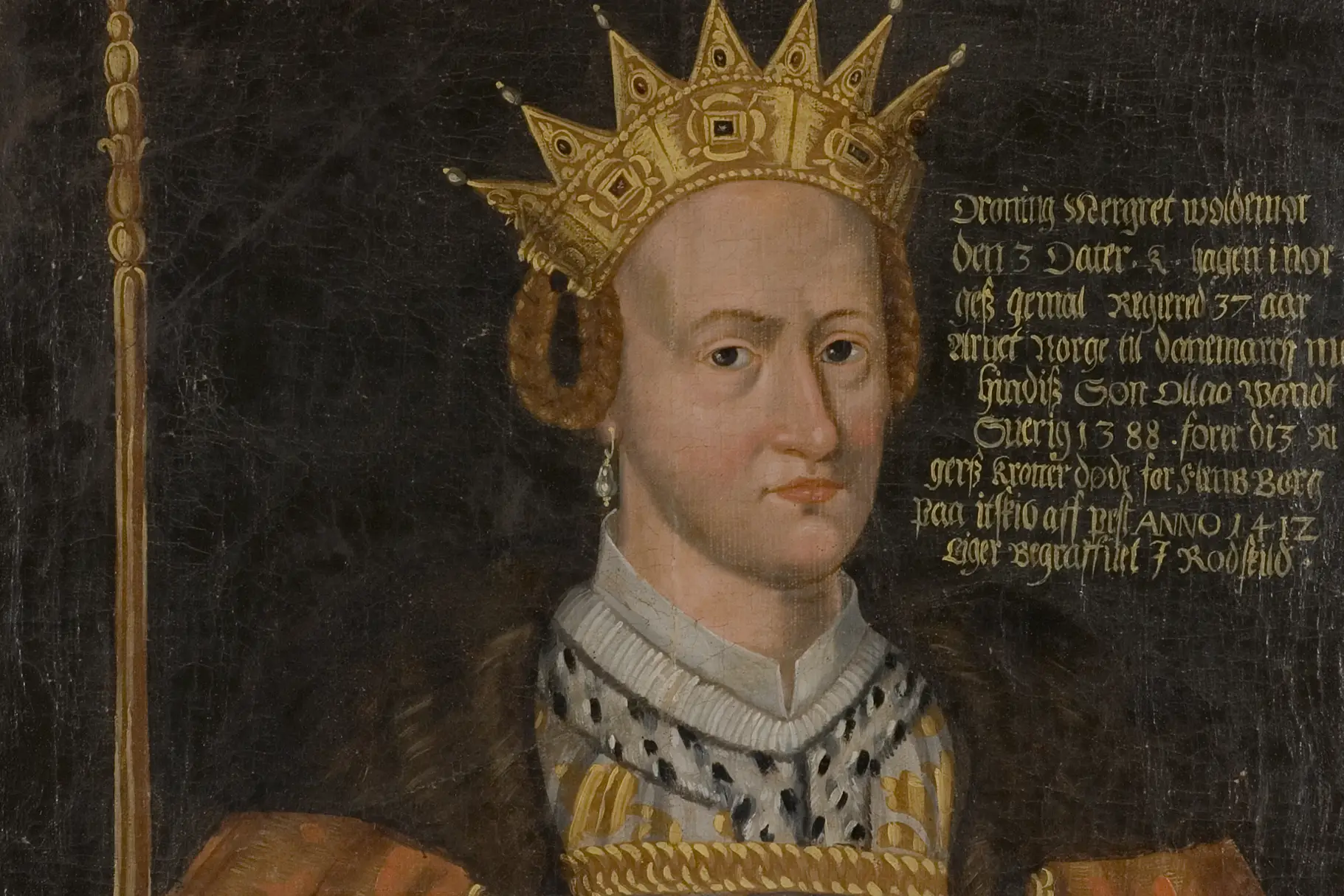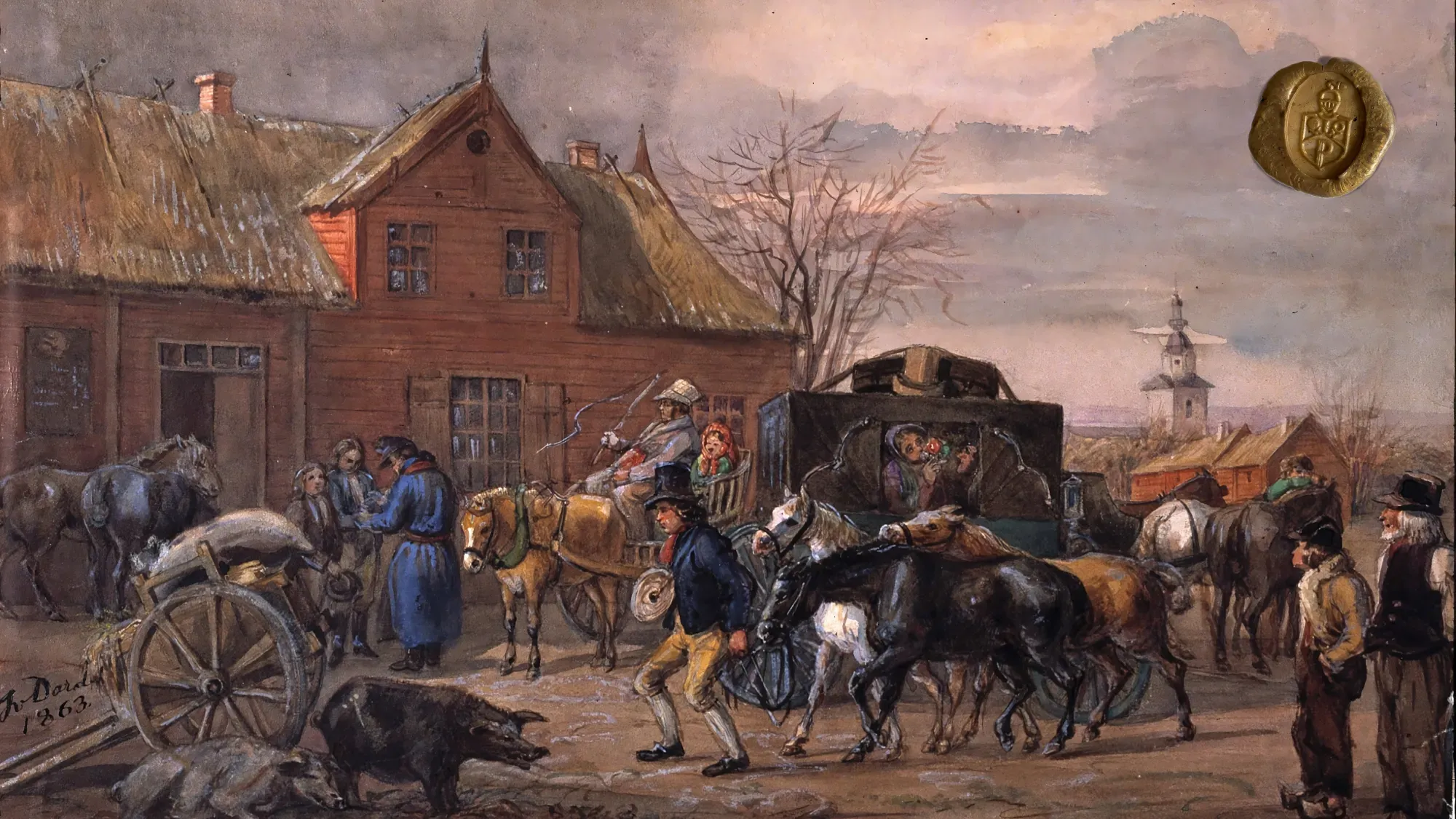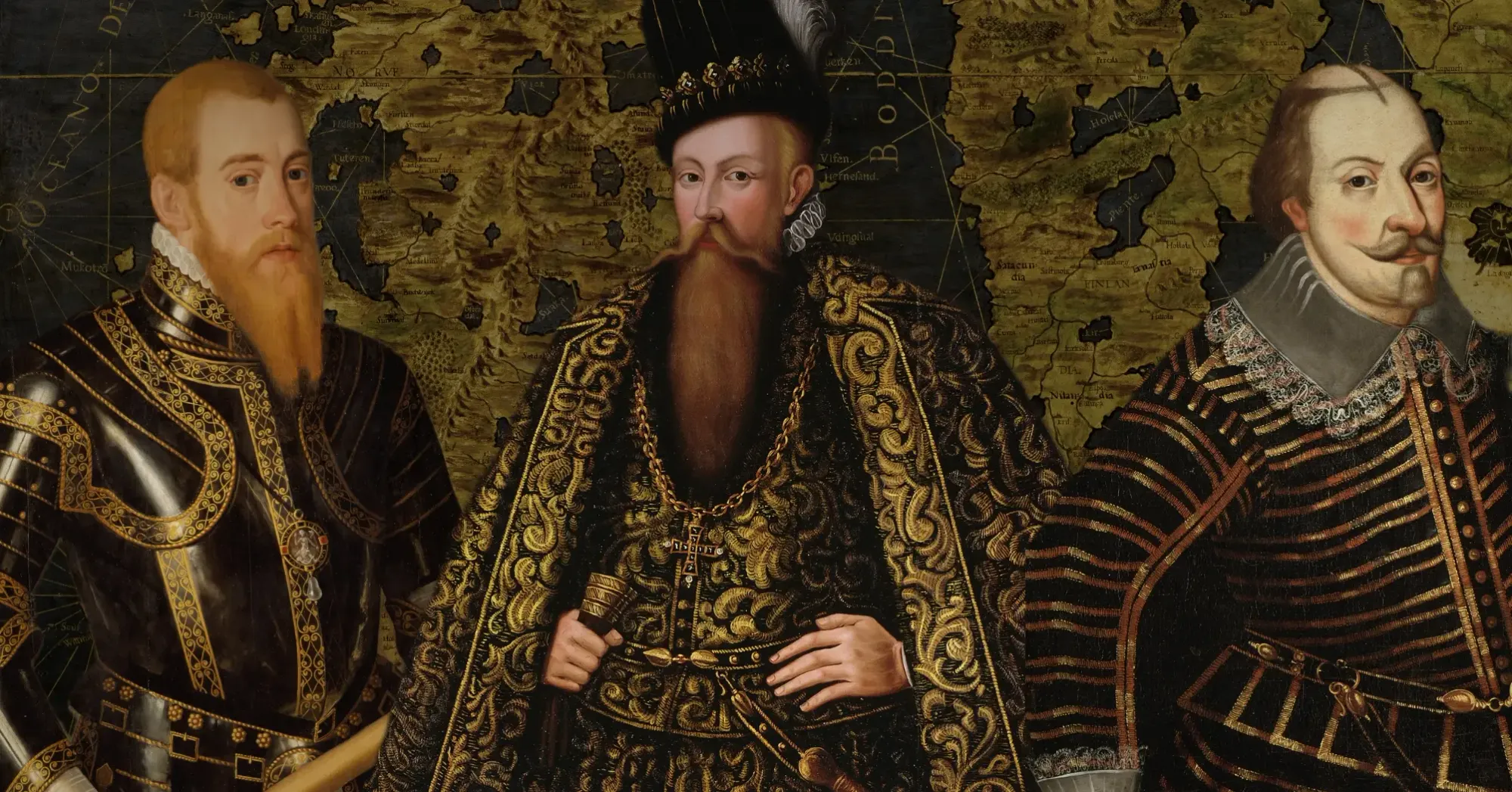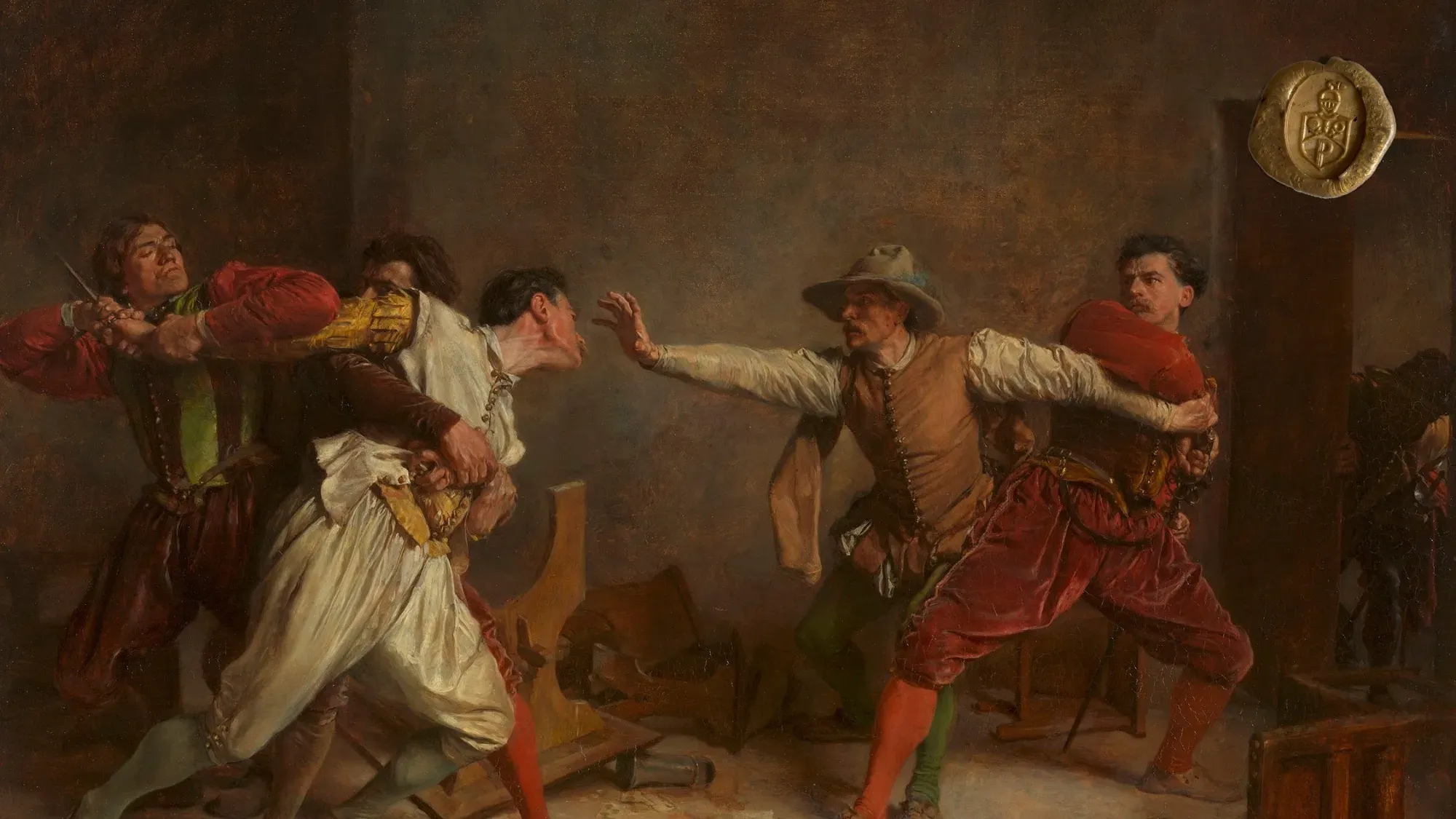A pawn in the games of men
The birth of Margaret I, or Margrethe as she was known in Denmark, was already marked by challenging circumstances – her mother was a prisoner at Søborg Castle when Margaret arrived in March 1353.[[1]] The youngest of six children of Valdemar IV, King of Denmark, and his wife Helvig, her story is one of a remarkable and well-deserved rise to power.
At the age of six, this daughter of the House of Estridsen was contractually engaged[[2]] to the youngest son of Magnus Eriksson, King of Sweden and Norway. In reality, Valdemar was after Scania[[3]], which wasn't part of the agreement. In 1359, he decided to act on his urges and occupy Scania, angering Magnus and resulting in the termination of the engagement. Valdemar continued on his rampage nonetheless, taking Visby, while Magnus joined forces with the Hanseatic League to enforce a trade embargo on Denmark.
Meanwhile, Haakon VI – formerly betrothed to Margaret and now the king of Norway and Sweden[[4]] – was engaged elsewhere. As fate would have it, the ship transporting his wife was redirected by a gale to Denmark; if that weren't misfortune enough, the marriage was also pronounced illegal.[[5]] Eventually, Denmark and Norway were able to reach a truce, and Margaret was married to Haakon on 9 April 1363 in Copenhagen, aged 10.
Margaret, who, like St. Bridget, possessed the masculine quality of indomitability, was undoubtedly the strongest.





